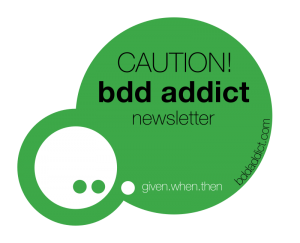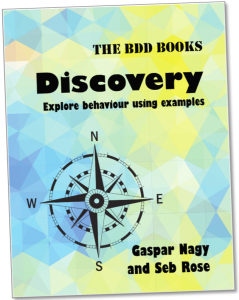The monthly dose for BDD addicts… In August #bdd, #specflow and #cucumber stories by Jeffrey Davidson, Paul Hammant, Ryan Thomas Hewitt, Eugen Paraschiv, Roy Williams & Vitalik Zaidman.
Subscribe to the monthly newsletter at http://bddaddict.com so that you never miss it! (Did you get the July issue?)
Dear BDD Addicts,
The school year has just started, but for me learning started already in August. The Agile 2017 conference in Orlando was a great experience. I learned a lot about book writing as we finalized our first bdd book (see below) and I also spent more than a week just reading tutorials, watching online demos and trying the things out. It was great!
This newsletter is shared every month to help you to learn and teach BDD, test automation, Cucumber, SpecFlow and everything related. You can help others by sending me a link of an interesting blog post or video to bddaddict@specsolutions.eu so that I can share it in one of the next issues.
Happy learning! Here is the monthly dose…
[Process] Start with simpler, language-only, non-data BDD
The Gherkin scenarios provide the documentation of the illustrative examples you have collected for the sake of a better understanding of the requirements. This is a living documentation, so you will always be able to see if the application behaves as you have expected. But in order to be really valuable, they have to be formulated in a business readable way. In their post, Paul Hammant and Jeffrey Davidson give hints about this. They show the process through a concrete example and they talk about writing styles, glossaries and data-centric scenarios.
BDD Acceptance Criteria Pay For Themselves Multiple Times (Paul Hammant, @paul_hammant; Jeffrey Davidson, @JeffreyGoodReq)
[Test Automation] The illusion of well tested
Focusing too much on code coverage metrics is dangerous — many people know this already. But testing what you have done instead of testing what you should have done is probably even more dangerous. BDD helps you to focus on behavior, so it makes a better separation of goals and the solution. Although BDD is not even mentioned in the post by Roy Williams, if you read it through, you will immediately see how well it fits.
Tautology Tests (Roy Williams, Roy on FB)

Comic by xkcd, https://xkcd.com/703/
[Process] Gherkin: how to teach your BA
It is not too common for business analysts to write BDD posts. But who would be a better source to talk about BDD for a BA if not a BA itself? Ryan Thomas Hewitt focuses on Gherkin and provides a brief introduction to Gherkin format and to writing Gherkin scenarios. My favorite part is the Gherkin quiz at the end. Read and share it with your BAs.
Gherkin for Business Analysts (Ryan Thomas Hewitt, @rthewitt01)
[Test Automation] The JavaScript testing landscape 2017
As a part of the preparation of my new Cucumber.js course, I have found this great compilation of test related tools and frameworks available for modern JavaScript applications today. But the article by Vitalik Zaidman is not just a simple list. It is not even a “10 best XYZ” kind of post. It is a detailed analysis of the different aspects of testing in JavaScript today and how the different tools can support it.
An Overview of JavaScript Testing in 2017 (Vitalik Zaidman, @vzaidman)
[Learn:Cucumber-JVM] Automate REST API
This guide from Eugen Paraschiv shows how to get started with REST API testing using Cucumber-JVM in Java. It shows how to setup the project and dependencies and also how to automate a business readable scenario.
REST API Testing with Cucumber (Eugen Paraschiv, @baeldung)




